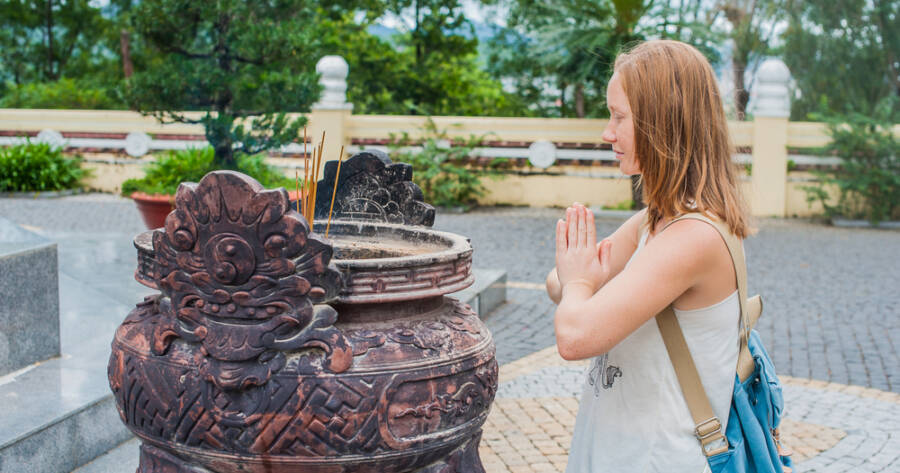Traveling to a new country is an exciting experience, but understanding cultural norms is key to making a good impression and avoiding unintentional offense. Every destination has unique customs, from greetings and tipping to table manners and dress codes. Being mindful of these traditions not only helps you blend in but also shows respect for the local culture. This guide will walk you through essential travel etiquette across different regions, so you can explore the world with confidence and cultural awareness.
Greetings and Personal Space: First Impressions Matter
How you greet someone can vary widely from country to country. A handshake might be standard in some places, while in others, a bow or a kiss on the cheek is the norm.
- Handshakes and Formal Greetings: In the United States, Canada, and many parts of Europe, a firm handshake is a common greeting. In business settings, maintaining eye contact is also important.
- Bowing: In Japan, bowing is a sign of respect. The depth of the bow depends on the formality of the situation. A slight bow works for casual encounters, while deeper bows indicate higher levels of respect.
- Kissing on the Cheek: In countries like France, Spain, and Argentina, a light kiss on both cheeks is a typical greeting, even among acquaintances.
- Hands-Off Cultures: In parts of Asia and the Middle East, physical contact, such as hugging or touching someone’s arm, can be seen as inappropriate, particularly between strangers or opposite genders.
- Personal Space Awareness: In countries like Sweden and Finland, people value personal space and may find overly close interactions uncomfortable. On the other hand, in places like India or Brazil, standing close while talking is normal.
Tipping Customs: When and How Much to Tip
Tipping culture varies significantly worldwide, and understanding expectations can save you from awkward encounters.
- Tipping is Expected: In the United States and Canada, tipping is customary, especially in restaurants (15-20% of the bill), taxis, and hotels. Service workers often rely on tips as part of their income.
- Service Charges Included: In many European countries like France, Italy, and Germany, a service charge is often included in the bill. However, rounding up or leaving a small amount (5-10%) is appreciated.
- No Tipping Culture: In Japan and South Korea, tipping is not expected and can even be considered rude. Instead, excellent service is a given, and staff take pride in their work without expecting extra gratuity.
- Moderate Tipping: In Australia and New Zealand, tipping is not mandatory, but rounding up or leaving 10% for exceptional service is appreciated.
Dining Etiquette: Table Manners Around the World
Each culture has unique dining customs, and following them can enhance your travel experience while avoiding unintentional faux pas.
- Use of Utensils: In Western countries, eating with a knife and fork is standard, while in Ethiopia, meals are often eaten with the hands using injera (a spongy flatbread).
- Chopstick Etiquette: In China, Japan, and South Korea, chopsticks should never be left sticking upright in rice, as it resembles funeral offerings. Passing food directly from chopstick to chopstick is also considered bad luck.
- Silence vs. Slurping: In Japan, slurping noodles is seen as a sign of appreciation, but in most Western countries, loud eating noises are frowned upon.
- Paying the Bill: In France, it’s common for the host to cover the bill, while in China, a friendly fight over who pays is expected. In the Netherlands, “going Dutch” (splitting the bill) is common practice.
Dress Codes and Respecting Local Norms
Dressing appropriately can prevent unwanted attention and ensure you respect local customs.
- Conservative Dress Codes: In countries like Saudi Arabia, Iran, and some parts of India, modest clothing is required, especially for women. Covering shoulders, arms, and legs is expected in religious sites.
- Casual vs. Formal Attire: In European cities like Paris and Milan, stylish and well-fitted clothing is the norm, while in places like Australia and Brazil, casual attire is widely accepted.
- Covering in Religious Sites: In Bali, Thailand, and the Vatican, visitors should cover their shoulders and knees when entering temples or churches. Carrying a scarf or shawl is a good travel hack for covering up when needed.
- Beachwear Restrictions: While bikinis are acceptable on beaches in places like Spain and Mexico, walking through town in swimwear is considered inappropriate. In Dubai, wearing swimwear outside designated beach areas can result in fines.
Navigating Local Customs and Respecting Traditions
Beyond greetings, tipping, dining, and dress codes, each country has unique traditions that travelers should be mindful of.
- Gestures Can Have Different Meanings: In Greece and Turkey, showing an open palm (like waving with fingers spread) is considered offensive. In Thailand, pointing with your feet is disrespectful, as feet are considered the lowest part of the body.
- Respect Religious Practices: In Muslim-majority countries, be mindful of prayer times and avoid eating or drinking in public during Ramadan. In Hindu temples in India, always remove your shoes before entering.
- Gift-Giving Traditions: In China, gifts should be presented with both hands, and it’s customary for the recipient to decline the gift a few times before accepting. In Russia, avoid giving even numbers of flowers, as they are associated with funerals.
Travel with Respect and Awareness
Understanding and respecting cultural etiquette can greatly enhance your travel experience, helping you build positive connections with locals and avoiding accidental offenses. By learning local customs before your trip—whether it’s how to greet someone, when to tip, or what to wear—you’ll show respect and appreciation for the culture you’re visiting. Travel is not just about seeing new places; it’s about embracing new ways of life and connecting with people in meaningful ways.

